Review: Mike Bartick on the Backscatter Mini Flash and Optical Snoot
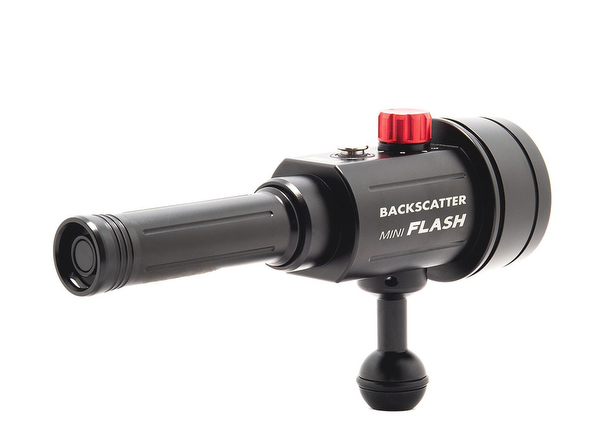
Backscatter MF-1 and OS-1 review
By Mike Bartick
Are you ready for something new? Then get ready for the new Backscatter Mini flash and Optical snoot kit. Don’t let the name or size fool you either because what it lacks for in bulk, it makes up for in strength and finesse.
I am primarily a macro shooter, so what I am looking for in a strobe, is power along with a simple control interface and the ability to finesse the power of the emitted strobe flash.
Fast recycle times are also crucial for repeat firing, and of course, white balance needs to be accurate regardless of whether I’m shooting RAW or not. These features are expected from a larger strobe, which is where the current market trend seems to be flowing, bigger, and more powerful.
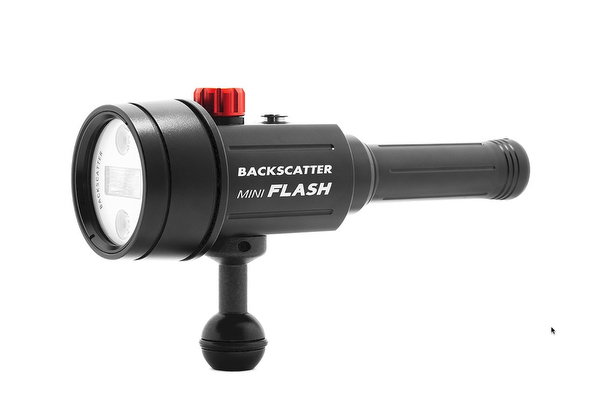
However, innovation sometimes takes a different course, and this can cause an interesting disruption in trends. Backscatter, for instance, designed the Mini Flash strobe system to be small, yet to deliver the power when needed and to be user-friendly.
This quick review is based on travels between the US and the Philippines, along with a trip to PNG. I’ve used it in a variety of shooting scenarios, and as my confidence has grown using the Mini flash, so has the punishment.
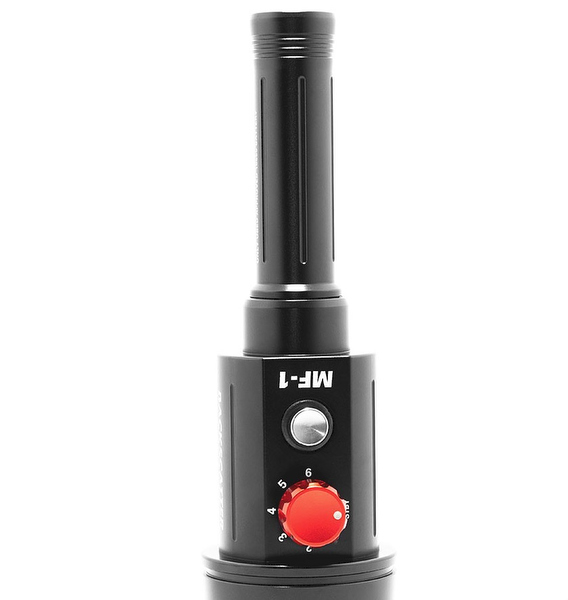
User interface:
Jim at Backscatter is big on the user interface, so I’m not surprised at how easy and thought through this is or by how simple it is to use. One button and one dial that is as easy as it can get.
To operate, 5 quick presses within 2 seconds of the power button powers up the device and places it into standby mode. Then, select your desired power using the dial’s levels 1-6, and you are ready to go. The pilot light is accessed through the same button and cycles through 3 power selections with an easy tap before returning to standby. A long press of the same button and the pilot light releases a rapidly pulsing flash to help your eyes find the snoot’s path on a sunny day. When finished, power the strobe back to standby, and everything shuts down, easy peasy!
The on/off button is large and simple to use, and the power dial, ranging from 1-6, has positive clicks making power changes very easy underwater, even without looking.
The strobe is powered by a single high performance 18650 Li-Ion battery, of a type that is commonly used for vaping, that has immediate high output and power on demand. These are important to the overall performance of this strobe, as it turns out the demand for power of the strobe closely matches that of a vape mod. For me, this is another sign of innovation and design.

The “Mighty Flash” strobe MF-1:
While in PNG, I found some of the reef scenes to be quite large and perfect for testing the Mini Flash’s power. Using their included flat diffuser, I used the strobe as both a fill flash in the center of the frame and as a primary for CFWA.

The OS-1 Optical Snoot:
The snoot slips over the strobe snuggly and secures tightly with a rubber mount. The 2 aperture sliders that control the size and shape of the light pool both come in three sizes. One is round for the classic snooted look, and the other is oval-shaped to match subject orientation.
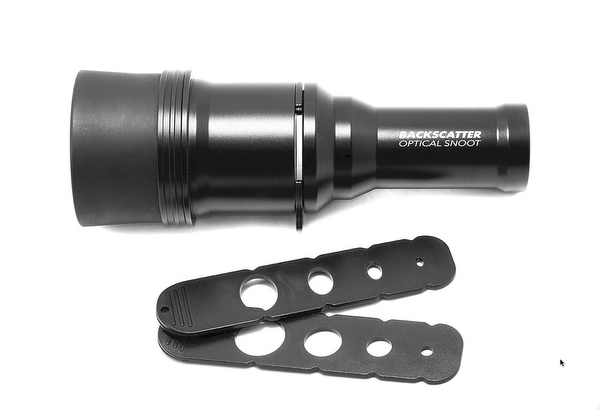
The head of the snoot also rotates for ease of use, which I also find to be handy.
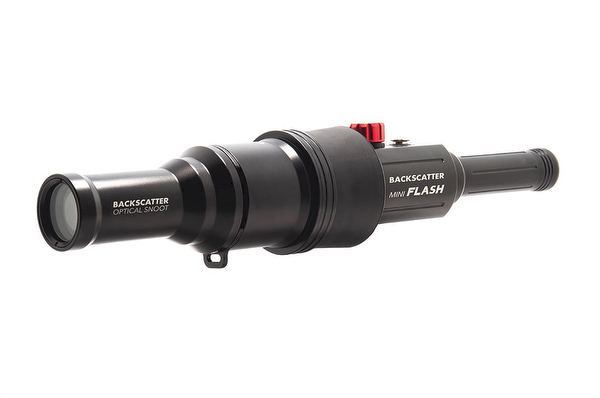
The Kit:
The MF-1 & OS-1 were designed together from its inception; this is quickly realized right away, from the first moment you use the two together.
The two work together as a single device and are lightweight above and below the water.
Like all optical snoots, there is a proper working distance of approximately 4 inches (10cm) from the subject. The beam cast from the snoot is also very accurate and can reach about 36 inches (90cm) in a shaded area or a little less in broad daylight. Being able to increase the distance from the subject is really important if you like to shoot shy critters, like brooding cardinalfish.
Power settings- I’ve found the power settings between 1 and 3 are suitable for fill light when shooting macro to help mitigate shadows within the frame. Power modes 4 and 5 are where I usually use the strobes. Between 4, 5, and 6, the power increases in what feels like 1/2 to full stops of light being emitted with decent recycle times. On power 5, I can dump 3 times rapidly before I see any fall off of light output from the strobe, and after a second, the strobe is ready to rock again even if you are using the mini flash’s focus light. Steady timing between shot’s on power 5 is my recommendation for the absolute best overall performance.
Recycle times:
Recycle times for repetitive shooting can be a challenge for any strobe, particularly when dumping a full charge. The power needed to recharge the capacitor and prepare it for the next full dump can take a little time, like filling up a full glass of water. The power demand needs to be answered by coupling the electronics with a suitable battery. Many times the choice is AA or a heavy proprietary battery.
That said, the recycle times supplied by the recommended Nitecore 18650 battery cuts down on the wait time.
Power settings in 6 levels and recycle times:
Power 1 to 3: No waiting, blast away!
Power 4: About 1 second. An excellent choice for super macro with slightly pushed ISOs and higher f-stops.
Power 5: About 1.5 seconds, a little slower after a burst of 3. Also, shooting at high F-stops and low ISO is not a problem for the mini flash.
Power 6: 1.5-2 seconds, the power on 6 is super strong and not needed for standard macro shooting.
The real deal:
I’ve spent a lot of my time teaching hundreds of people how to use different types of snoots. Most to the time, frustration and encouragement are the norms for the first few dives.
The real test was when I placed the MF_1 into the hands of my guests at a recent workshop. Each person that I gave it to has come back with positive results on their first dive. This is very refreshing as both a photo coach to see and satisfying for the end-user to experience. After a couple of dives, the same guests were submitting some striking images, which leads me to conclude that anyone that wants to shoot with a snoot, should try this kit first.
Another great use of this smaller strobe is that I’m able to send it out with my guides to help guests snoot subjects too. With the other styles of snoots, this can also be problematic for the shooter and the guide as its often challenging to communicate underwater effectively.
For travel, the kit is compact and light. Batteries and charging are easy to manage, the price is accessible, and the device delivers in a big way. And while it is not designed to replace the power of a larger strobe, I feel that this new strobe kit will carve out its niche in the macro market.
Factory Specs:
- Depth Rating: 100m/330ft
- Guide Number: ƒ/16
- Lumens: 500 Lumens
- Power: Single 18650 Battery**
- Recycle time (full): 2.5 seconds
- Number of Flashes (full): Up to 1400**
- Weight in Air: 13.25oz/375g
- Weight in Water: 5.29oz/150g
- Sync Cord: Fiber Optic
- Seal: Dual O-Rings
- Exposure Control:
- Flash: 6-step Power Level
- LED: 3-step Power Level
- Dimensions With Ball(LxWxD):
- 7.36 x 2.31 x 4.06in
- 187 x 59 x 104mm
- Material: Anodized Machined Aluminium
- Included Accessories:
- 1-inch Ball Mount
- YS Mount
- Diffuser
- Spare O-ring Set
- O-ring Grease
The first few images were shot without the snoot: MF-1 with diffuser

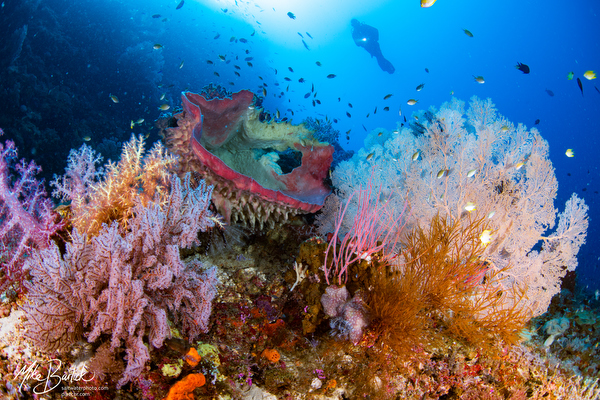
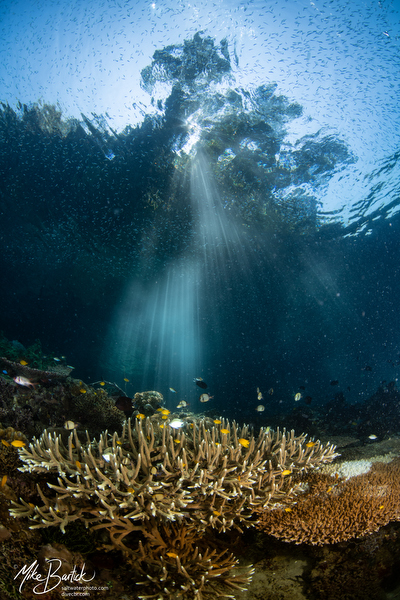
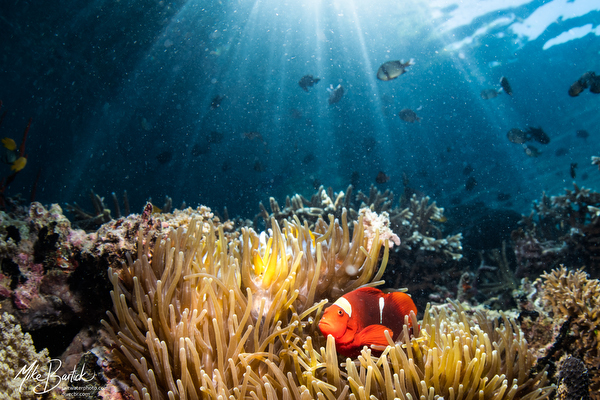

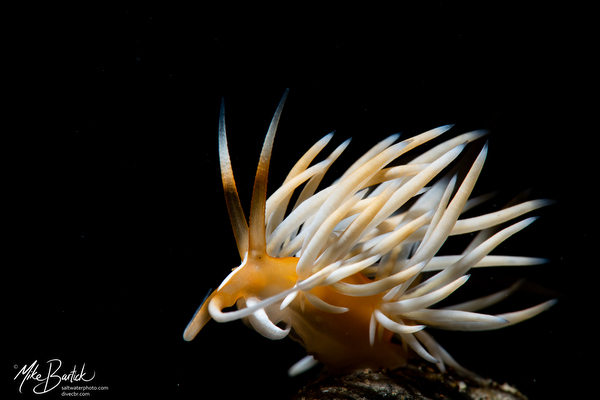
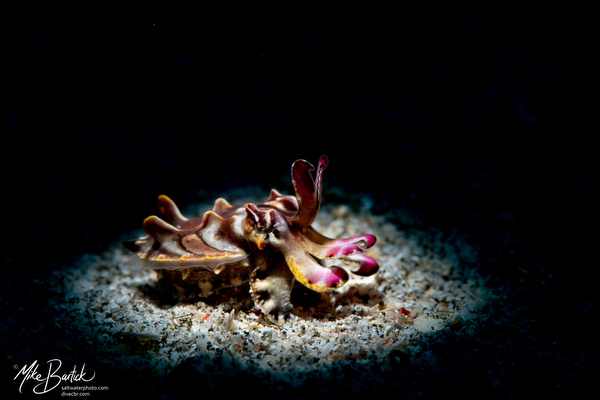
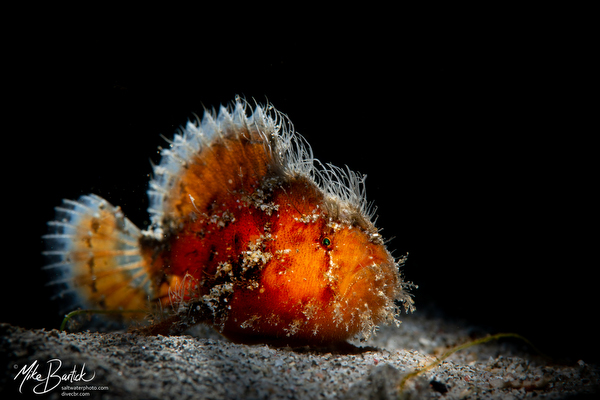


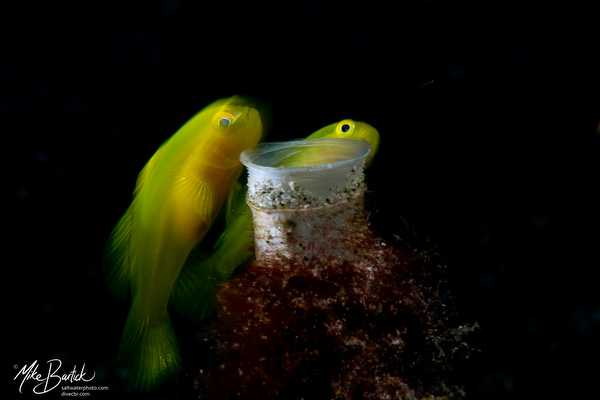
Overall, my impressions of the MF-1 as a stand-alone strobe coupled with the OS-1 as a kit are excellent. They are fun to use, easy to travel with, and won’t kill the pocketbook. The best impression for me though, was seeing my guests use them and feeling their enthusiasm after just a single dive. Thanks to Backscatter, I might need to find another line of work.
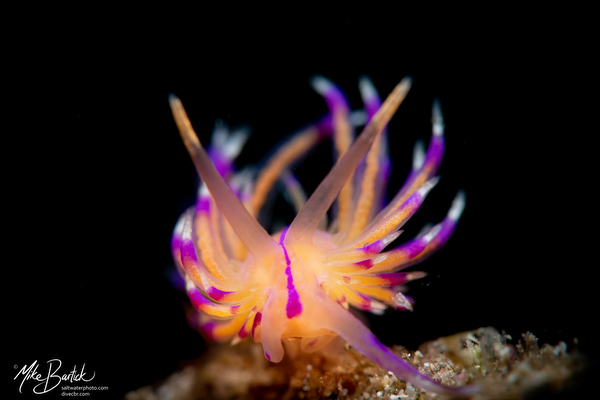
Special thanks to the excellent guides for their assistance in both PN and in Anilao.
About the author:
Mike Bartick of Saltwater Photo is a professional underwater photographer who is widely published and also manages the Crystal Blue Dive Resort in Anilao, Philippines. Mike is also a local distributer for the Backscatter MF-1 and OS-1 (FTTC Disclosure).